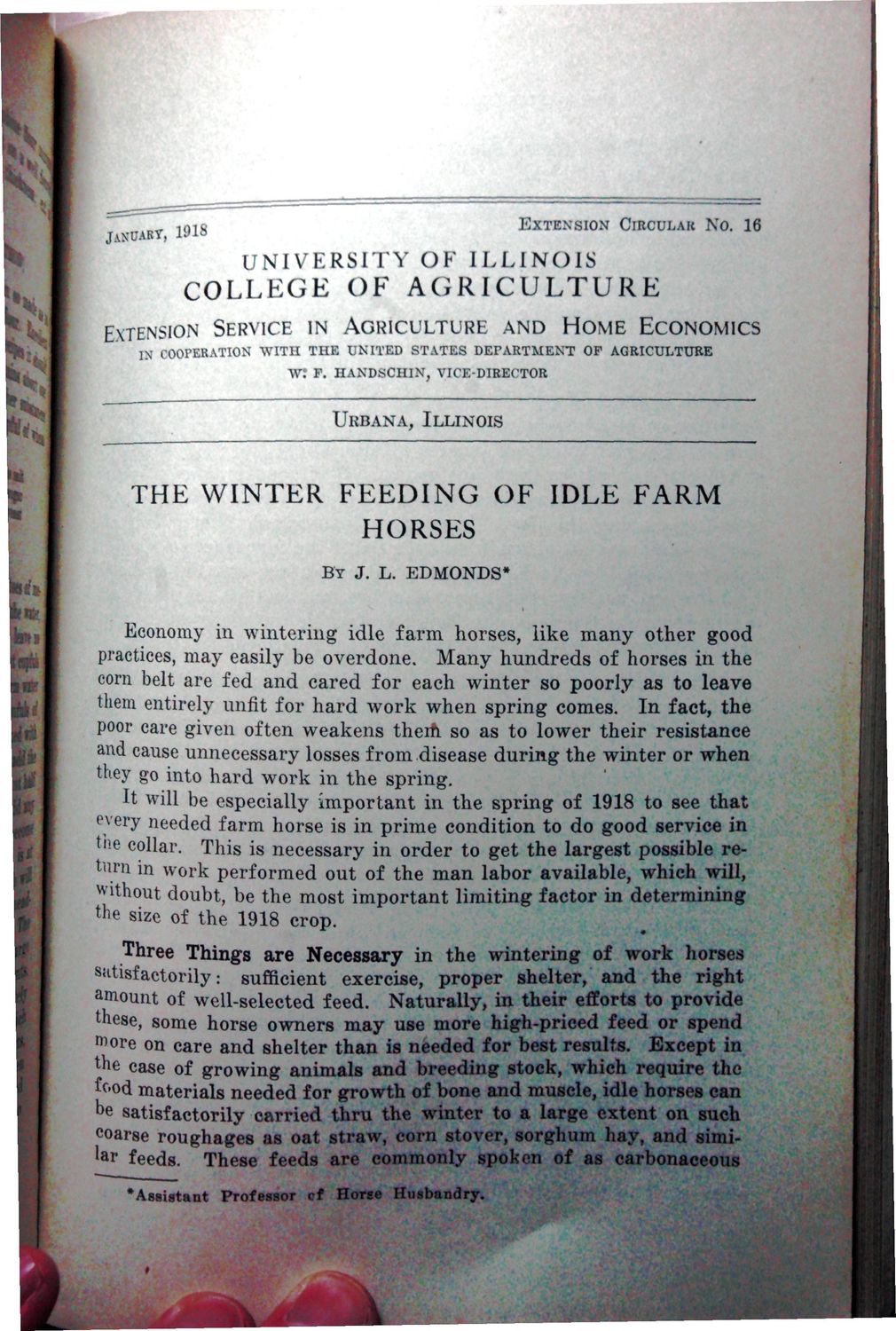| |
| |
Caption: War Publications - WWI Compilation 1923 - Article 43
This is a reduced-resolution page image for fast online browsing.

EXTRACTED TEXT FROM PAGE:
JANUARY, 1918 EXTENSION CIRCULAR N O . 16 U N I V E R S I T Y OK ILLINOIS COLLEGE OF AGRICULTURE ARTMENT EXTENSION SERVICE IN AGRICULTURE AND HOME ECONOMICS \\ r : F. HAXDSCHIX, VICE-DIRECTOR UKBANA, ILLINOIS THE WINTER FEEDING OF IDLE FARM HORSES B Y J. L. EDMONDS* Economy in wintering idle farm horses, like many other good practices, may easily be overdone. Many hundreds of horses in the corn belt are fed and cared for each winter so poorly as to leave them entirely unfit for hard work when spring comes. In fact, the poor care given often weakens theih so as to lower their resistance and cause unnecessary losses from disease during the winter or when they go into hard work in the spring. It will be especially important in the spring of 1918 to see that every needed farm horse is in prime condition to do good service in tne collar. This is necessary in order to get the largest possible return in work performed out of the man labor available, which will, without doubt, be the most important limiting factor in determining the size of the 1918 crop. Three Things are Necessary in the wintering of work horses satisfactorily: sufficient exercise, proper shelter, and the right amount of well-selected feed. Naturally, in their efforts to provide these, some horse owners may use more high-priced feed or spend m ore on care and shelter than is needed for best results. Except in the case of growing animals and breeding stock, which require the food materials needed for growth of bone and muscle, idle horses can be satisfactorily carried thru the winter to a large extent on such coarse roughages as oat straw, corn stover, sorghum hay, and similar feeds. These feeds are commonly spoken of as carbonaceous Assistant Professor cf Horse Husbandry. m
| |